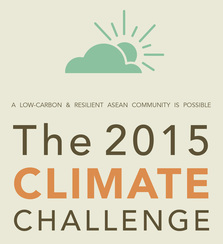- Home
- About
-
Publications
- Public Administration News
-
ARPA
>
- ARPA Scope and Objectives
- ARPA Editorial Board
- ARPA Call for Papers
- Submit Article
-
ARPA Open Access
>
- India (2020-2023, Vol. 31, Nos. 1&2, pg. 4-22)
- Nepal (2020-2023, Vol. 31, Nos. 1&2, pg. 23-46)
- Vietnam (2020-2023, Vol. 31, Nos. 1&2, pg. 47-67)
- China (2020-2023, Vol. 31, Nos. 1&2, pg. 68-79)
- South Korea (2020-2023, Vol. 31, Nos. 1&2, pg. 80-99)
- Bangladesh (2020-2023, Vol. 31, Nos. 1&2, pg. 100-119)
- USA (2020-2023, Vol. 31, Nos. 1&2, pg. 120-141)
- Abstracts >
- Publication Ethics and Malpractice Statement
- Notes for Contributors
- Journal Indexing
- EROPA Bulletin >
- Resources >
- Membership
-
Conferences
-
Activities
- #TAG Dialogue
- Contact Us
 By 2015, two goals are set to be achieved by the Association of Southeast Asian Nations (ASEAN). One is the creation of a fully integrated regional common market. The other is for it and all parties to the United Nations Framework Convention on Climate Change (UNFCCC) to clinch a new climate deal. Although these tasks seem to be unrelated, they are inextricably linked. On one hand, the outcome of the UNFCCC negotiations will chart the destiny not only of Southeast Asia but also of the entire planet in this era of indubitable climate change. On the other hand, how ASEAN countries extract, utilise and trade their natural resources and power their industries for economic development will bear upon any UNFCCC effort to mitigate and cope with the impact of climate change. For example, the expected expansion of energy supply infrastructure in the context of economic integration would increase ASEAN’s share of global energy-related carbon dioxide emissions. The latter is forecast to increase by 5% by 2030 up from 3.5% today. In terms of energy use, ASEAN’s final energy consumption will grow at an annual average rate of 4.4%, from 375 million tonnes of oil equivalent (MTOE) to 1,018 MTOE. (Institute of Energy Economics Japan) In the field of forestry, the UN Food and Agriculture Organisation reports a total of 43.6 million hectares deforested in the main forest countries of the region between 1995 and 2005, corresponding to a release of about 3.45 million tonnes of carbon. Globally, without drastic reductions in CO2 emissions, the earth’s temperature could rise by as much as six degrees Celsius by the end of the century [UN IPCC] that could lead to a potentially irreversible catastrophic scenario.
0 Comments
Leave a Reply. |
Archives
December 2019
Categories
All
|
- Home
- About
-
Publications
- Public Administration News
-
ARPA
>
- ARPA Scope and Objectives
- ARPA Editorial Board
- ARPA Call for Papers
- Submit Article
-
ARPA Open Access
>
- India (2020-2023, Vol. 31, Nos. 1&2, pg. 4-22)
- Nepal (2020-2023, Vol. 31, Nos. 1&2, pg. 23-46)
- Vietnam (2020-2023, Vol. 31, Nos. 1&2, pg. 47-67)
- China (2020-2023, Vol. 31, Nos. 1&2, pg. 68-79)
- South Korea (2020-2023, Vol. 31, Nos. 1&2, pg. 80-99)
- Bangladesh (2020-2023, Vol. 31, Nos. 1&2, pg. 100-119)
- USA (2020-2023, Vol. 31, Nos. 1&2, pg. 120-141)
- Abstracts >
- Publication Ethics and Malpractice Statement
- Notes for Contributors
- Journal Indexing
- EROPA Bulletin >
- Resources >
- Membership
-
Conferences
-
Activities
- #TAG Dialogue
- Contact Us

 RSS Feed
RSS Feed